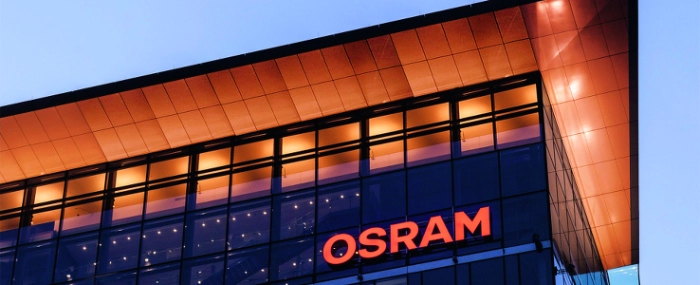
© Osram
Business |
Osram’s early structural changes paid off
The Munich based company achieved a respectable second quarter given the global challenges and thus met the market expectations.
Although revenue fell by almost 8% on a comparable basis to EUR 821 million, a positive free cash flow of EUR 64 million was achieved particularly through targeted cash management.
The adjusted EBITDA margin improved by almost four percentage points year-on-year to 11.7%. Due to restructuring costs of EUR 45 million, mainly for charges for the structural and personnel adjustments, the net result was negative at EUR 39.3 million.
“The measures we took very early on to counter the consequences of the COVID-19 crisis are having an effect throughout the company. It has been a challenge to maintain production largely on a regular basis in recent weeks, as our top priority is and remains the health and protection of our employees. Osram is also using the time to be well positioned after the Corona crisis. Our high equity ratio is of great benefit to us,” says Olaf Berlien, CEO of OSRAM Licht AG, in a press release.
As part of company-wide crisis management, additional liquidity volume of around EUR 200 million was identified until the end of the fiscal year through working time measures, the review of investments and consistent financing management, among other things.
Regardless of the acute measures, Osram is sticking to its existing performance programs, which will bring savings of EUR 300 million from 2018 until the end of fiscal year 2022. By doing thy Osram sees itself as well prepared for economic challenges.
The Opto Semiconductors division reported a strong adjusted EBITDA margin of 21% in the past quarter. Sales in the semiconductor division decreased slightly to EUR 362 million euros. At 431 million euros, comparable sales in the Automotive sector were significantly lower than in the previous year. The cause for this is, among other things, the initial effects of the COVID-19 crisis on the automotive industry, which was already weakened before the corona crisis. Revenues in the business unit Digital (DI) also fell significantly by about 12%. Here, the pandemic-related decline in the entertainment and cinema lighting business and in building illumination projects in China became noticeable. The DI division was nevertheless able to maintain its operating profitability, with adjusted EBITDA positive at EUR 2 million.
In the medium and long term, the effects of COVID-19 on the global economy cannot yet be predicted. The situation is accompanied by operational and financial challenges for the entire economy. In particular, production shutdowns on the part of customers and disruptions in global supply chains are very likely to affect Osram's business development. As already announced in mid-March, the company therefore expects not to be able to achieve its original corporate targets for the 2020 financial year..
Starting in May, a larger number of Osram employees will be affected by short-time working. The Osram Managing Board has therefore decided to waive 10% of its May salary as well.



